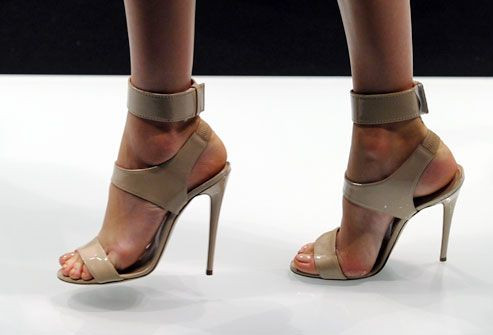Bunions Inherited: Don't Blame Your Shoes, Some Can Help

Bunions have more to do with genes than shoes, a new study finds. But there are still steps you can take steps toward prevention and treatment.
Bunions, bony growths on the big toes at the metatarsophalangeal (MTP) joint, have been linked to family history, not shoes. The findings are contrary to a popular misconception about bunions, which are often attributed to high heels and constrictive shoewear.
More than half of American women have bunions, according to the American Academy of Orthopaedic Surgeons. More than nine out of 10 bunion cases affect women.
The myth that bunions are caused by constricting shoewear may owe some of its strength to the fact that women are more likely to develop bunions than men, researchers said.
The Framingham Foot study, the first to examine heretibility of foot disorders in humans, looked at 1,370 individuals and suggested that although footwear could exacerbate bunions, the root cause was genetics.
The study, which was executed between 2002 and 2008, investigated men and women with foot problems, including bunions as well as hammer and claw toes, and compared their frequency with those of close family members.
The researchers suggested that certain foot shapes, as determined by genetics, were predisposed to developing bunions.
"These new findings highlight the importance of furthering our understanding of what causes greater susceptibility to these foot conditions, as knowing more about the pathway may ultimately lead to early prevention or early treatment," said lead researcher Marian Hannan.
"This is what we tell our patients-- as opposed to the myth that shoes cause bunions," said Richard Handford, of the Society of Chiropodists and Podiatrists. "It is something a person will have a predisposition to-- but poor footwear will exacerbate it."
"It's a bony deformity, so it's not going to fit into a shoe if you ram it in," said Handford.
"And once you have a bunion, accommodative footwear is it."
Most of the time, treatment is possible without surgery.
The American Academy of Orthopaedic Surgeons makes several recommendations for dealing with bunions.
For combatting bunions, prevention is the best approach. Try wearing shoes that conform to the shape of your feet, rather than the other way around. Wear shoes with wide insteps, broad toes, and soft soles. Avoid shoes that are sharp, pointed, and tight. Avoid shoes with heels taller than 2.25 inches.
If you have a bunion, you can alleviate pain by wearing shoes that are spacious enough to avoid putting unnecessary pressure on your feet. Additionally, you might consider having shoes that are tight stretched professionally. Protective pads may also be used to help cushion the painful area.
If you have difficulty walking, or if discomfort associated with your bunion persists even after these measures have been taken, it may be appropriate to undergo surgery. Bunion surgery realigns bone, ligaments, tendons, and nerves, bringing the big toe back to its normal position.
Following bunion surgery, a long recovery is common and may include persistent swelling and stiffness.
Bunionettes, or "tailor's bunions," can also appear near the base of the little toe. A bunionette is much like a bunion, and is exacerbated by shoes that are too tight. The same preventative and corrective measures used for treating bunions are also recommended for treating bunionettes.



























